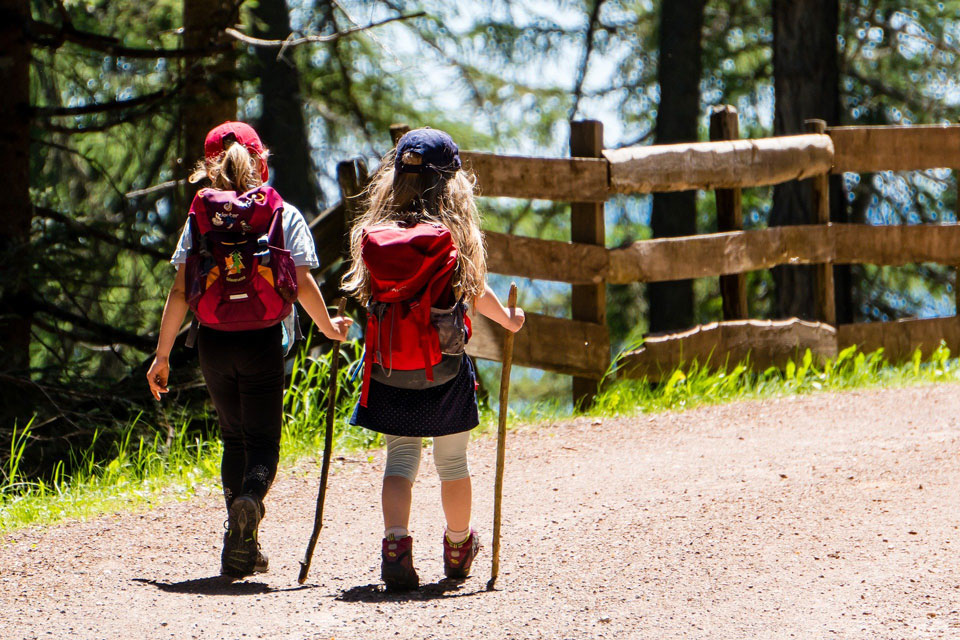Pathways to boosted mental, physical and academic wellbeing
We instinctively know that going outside into nature is good for body and soul.
Now, science is also on our side. Simple things like feeding the birds, planting flowers for bees and other nature-centric acts have been found to produce “a scientifically significant increase in people’s health [and] happiness [that is] sustained for months”.1 – How exciting that such simple and sensory steps can connect our high learning potential children into significant and much-needed natural wellbeing.
Getting Started
The aim is simply to properly connect with an experience of nature.
Are there any areas where your child’s physical, mental or academic wellbeing needs a boost? What are their interests? Do you have a garden, transport, any health issues or restrictions?
These 5 Ways to Wellbeing, slightly amended from The Wildlife Trust, give a great framework:
- Be Active (Get outside and explore)
- Connect (Share your wildlife experiences)
- Give (Help your local place and people)
- Take Notice (of the everyday wildness on your doorstep)
- Learn (Try something new outside).
The Great Outdoors
Before leaving the house: check the details of any places you are visiting as facilities may vary according to circumstances; also, if your child has sensory sensitivities, prepare with the Potential Plus UK blog on Working Around Sensory Sensitivities
- A visit to an RSPB reserve will thrill young bird-lovers Find your Nearest Reserve – The RSPB. Head to a lake, river or coastline as watching birds in action flocking or diving for food is particularly good for human wellbeing.
- Young architects and historians may love the living countryside attached to beautiful properties managed, for example, by the National Trust, National Trust best days out ideas in the UK , English Heritage, English Heritage places to visit or Cadw, https://cadw.gov.wales/.
- Ask your child to pick some of The Wildlife Trusts 2,300 varied nature reserves and 100 coastal/undersea projects to explore! The Wildlife Trusts Nature Reserves .
- Walk or hike your way around a reserve The Wildlife Trusts Find a walk near you or research your local public footpaths and parks.
- Try out some of the organised activities run by local conservation groups, bush crafters or Wildlife Trusts . Toddlers may love an introduction to birds and mini-beasts, older children might forage for safe foods or sow bee-friendly seeds. Young people (around 12-16) can become volunteers-in-training and clear shrubland or test natural pond water. Participants report an exciting, new bond with nature, having fun, making friends, learning, getting fit and, particularly for teenagers, gaining self-esteem through building skills and taking on responsibility.
Mainly Indoors
During times of bad weather, illness or other restrictions, it is still very possible for your child to connect to nature in ways that will enhance their wellbeing.
- Get wildlife spotting (even from an urban balcony) with the free guide at RSPB Welcome wildlife to your garden .
- If you have any kind of patio space or window ledge, watch them excitedly create and look after a container herb garden or wildlife pot, see The Wildlife Trusts how to create a container garden for wildlife
- If you have no space indoors at all, find a spot in a community area or a shared hedge where your child can make an insect home from dead twigs, provide clean water for birds and hedgehogs or plant a few flower seeds. See RSPB gardening for wildlife .
- Amazing webcams The Wildlife Trusts Webcams allow your child to immerse themselves in the lives of owls, falcons, seals, badgers…
- Helping bees can be very rewarding; check out Friends of the Earth’s colourful ideas; Friends of the Earth great British bee count activities for children .
- See The Wildlife Trusts looking after yourself, and nature for lovely ‘making’ activities, animal-inspired yoga poses and a duck-spotter video.
- For high potential learners in Key Stages 1 and 2, Potential Plus UK’s Nature Activity Pack contains 20 thought-provoking in/outdoor activities,see Potential Plus UK ‘s Nature Let’s Explore Activity Booklet .
- Older children can join exciting scientific research into bee behaviours Friends of the Earth bee surveys – record bees and help science or other projects run by Friends of the Earth .
- “Stay in and explore” with BBC Earth and Earth Kids BBC Earth Kids or the Worldwide Fund for Nature, World Wildlife Fund learn about our planet’s most amazing species and World Wildlife Fund school resources and activities . Use these to stimulate a desire to get out in nature when possible.
The Approach Is Key
- Include nature into your everyday routine.
- Be “hands-on”, immersive and creative rather than just learning facts.
- If your child needs facts first and knowledge, use this as a pathway in, extending it with “contact, emotion, meaning, compassion and engagement with natural beauty” to get wellbeing gains (Dr Miles Richardson, University of Derby).
- If your child loves exercise, add immersive activities to bring a truly beneficial connection. Avoid jogging in nature with earphones in, which blocks absorption in their surroundings.
- Walking for wellbeing in an urban environment means actively engaging with the surroundings. There is always a sky that is full of weather and the occasional bird, tree or window box to get to know.
- Watch animals feeding, insects burrowing, town birds flocking or seabirds diving. Being absorbed in their activity brings the greatest boost to your child’s wellbeing.
The Evidence for Nature and Wellbeing
Mental: “Exposure to nature can benefit mental wellbeing in areas such as anxiety, mental fatigue, attention capacity, vitality, happiness and lowering cognitive anxiety”.2 Valuable evidence, indeed, since many children with high learning potential struggle with mental health issues including anxiety, mental fatigue and low self-esteem – and even more encouraging as children actively involved with activities in nature showed increases in self-esteem and their ability to (assess and) take risks.
Physical: There is strong evidence to show that by the time children leave secondary school their attitude to exercise is highly predictive of whether they will be physically active as adults. […] Nature is a major motivating factor for exercise. [Particularly in pre-school] children increase their physical activity levels when outdoors and are attracted to nature.3
Academic: “Outdoor natural space provides additional opportunities for critical thinking, creative inquiry and problem solving; fundamental life skills permitting students to think critically about issues pertinent to their lives and the world outside the classroom”3
On another level, children’s creativity comes to the fore and they have fun exercising, playing and discovering.2
Attention Deficit Hyperactivity Disorder (ADHD)
In some cases, becoming immersed in nature has significantly improved the symptoms of ADHD.2 This is presumed to be due to the calming influence of a natural environment, which can also aid concentration.
Interestingly, this is backed up by a significant study by the RSPB and partners: “Outdoor activities in nature appear to improve symptoms of ADHD in children by 30% compared with urban outdoor activities and threefold compared with the indoor environment. All children with ADHD may benefit from more time in contact with nature, greener routes to school and more natural views from their windows.”4
Links to Background Reading
- Every Child Outdoors (rspb.org.uk)
- BBC – Earth – How nature is good for our health and happiness
- Why Connecting with Nature Elevates Your Mental Health | Psychology Today
- Does marine biodiversity have a positive effect on human wellbeing? – Saving Species – Our work – The RSPB Community
- 30 Days Wild: Development and Evaluation of a Large-Scale Nature Engagement Campaign to Improve Well-Being (plos.org)
Footnotes
- 1 New review says get long-lasting feel-good factor from 30 Days Wild – 2020 – University of Derby
- 2 BBC – Earth – How nature is good for our health and happiness
- 3 Bird (2004) Natural Fit: can green space and biodiversity increase levels of physical activity? RSPB: www.rspb.org.uk/health / (and partners including Pretty et al (2009) Nature, Childhood, Health and Life Pathways)
- 4 Bird (2007) Natural Thinking: investigating the links between the natural environment, biodiversity and mental health. RSPB: www.rspb.org.uk/health/

About the author: Gillie Ithell is a writer and editor for Potential Plus UK with a B.A. in Modern Languages & Communication and further qualifications in mental health. Having worked internationally as content manager of classic board games and ‘edutainment’ software, Gillie now writes to inspire others like herself; on a daily journey with High Learning Potential.






